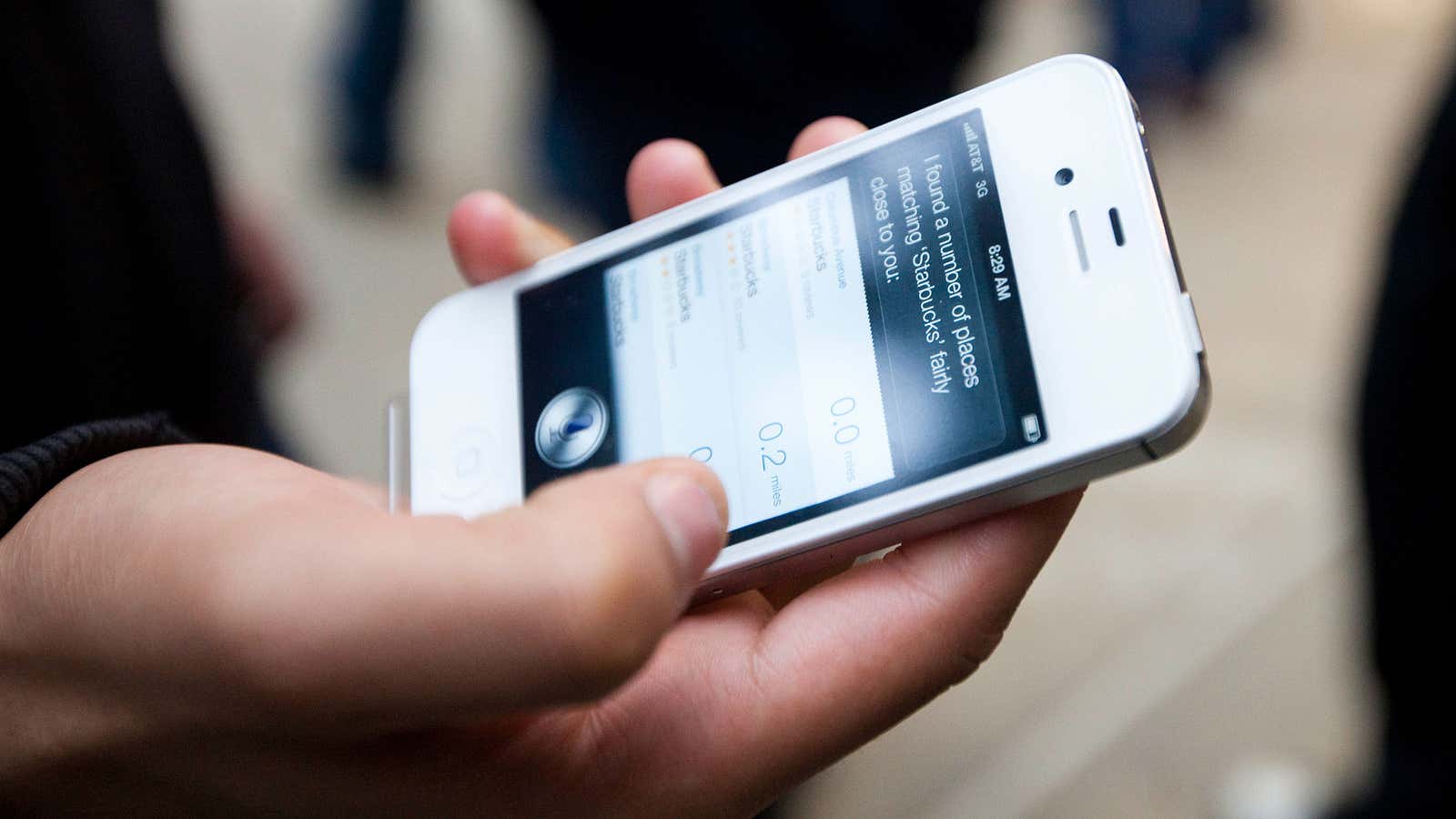There’s been plenty of skepticism about the “shared data” plans US wireless carriers have been flogging lately, which allow family members on the same plan to share a single pool of gigabytes for all their gadgets’ internet needs. Are they a good deal for consumers, or just a smart way for companies like Verizon and AT&T to squeeze more money out of them?
Well, it would seem to be the latter. In their post-earnings conference call Oct. 18—the earnings were good, by the way—Verizon wireless executives explain a bit more about why they’re able to extract more cash from customers under such plans. The short version: Though people have the best of intentions to save on data usage when they switch to shared plans, instead they tend to add more devices, especially cheap iPhones, and devour even more gigs.
We are seeing our customers move from their old legacy plans, we’re seeing customers who were on unlimited plans move to Share Everything plans. Now, you will think that these initial customers that … moved are optimizing from that, but what we’re seeing is that they are attaching more devices, that includes more smartphones and especially with the price points now on some of the lower end iPhones that we have, we’re seeing more attachment rates there.
This is great for Verizon in a bunch of ways. They sell more phones. And those phones, smartphones, use more data. That drives usage revenues higher. “Device adoption and data usage will become the primary drivers of service revenue growth for years to come,” Verizon executives told analysts.
The company said its average revenue per account grew to $145 a month last quarter, up 6.5%. That’s a new metric for Verizon, which had previously reported revenue per user. Its shared data plan, branded as “Share Everything,” has been adopted by 13% of Verizon accounts under contract.
Such shrewd methods of converting rapidly changing consumer behavior into cold hard cash is one of the reason that Americans—even amid a broad retrenchment in consumer spending over recent years—have been spending relatively incredible amounts on telephone services. The Wall Street Journal recently reported:
Americans spent $116 more a year on telephone services in 2011 than they did in 2007, according to the Labor Department, even as total household expenditures increased by just $67. Meanwhile, spending on food away from home fell by $48, apparel spending declined by $141, and entertainment spending dropped by $126. The figures aren’t adjusted for inflation. The increase in telephone-services spending masks an even higher rise in cellphone bills, because people have been paying less for landline service.
